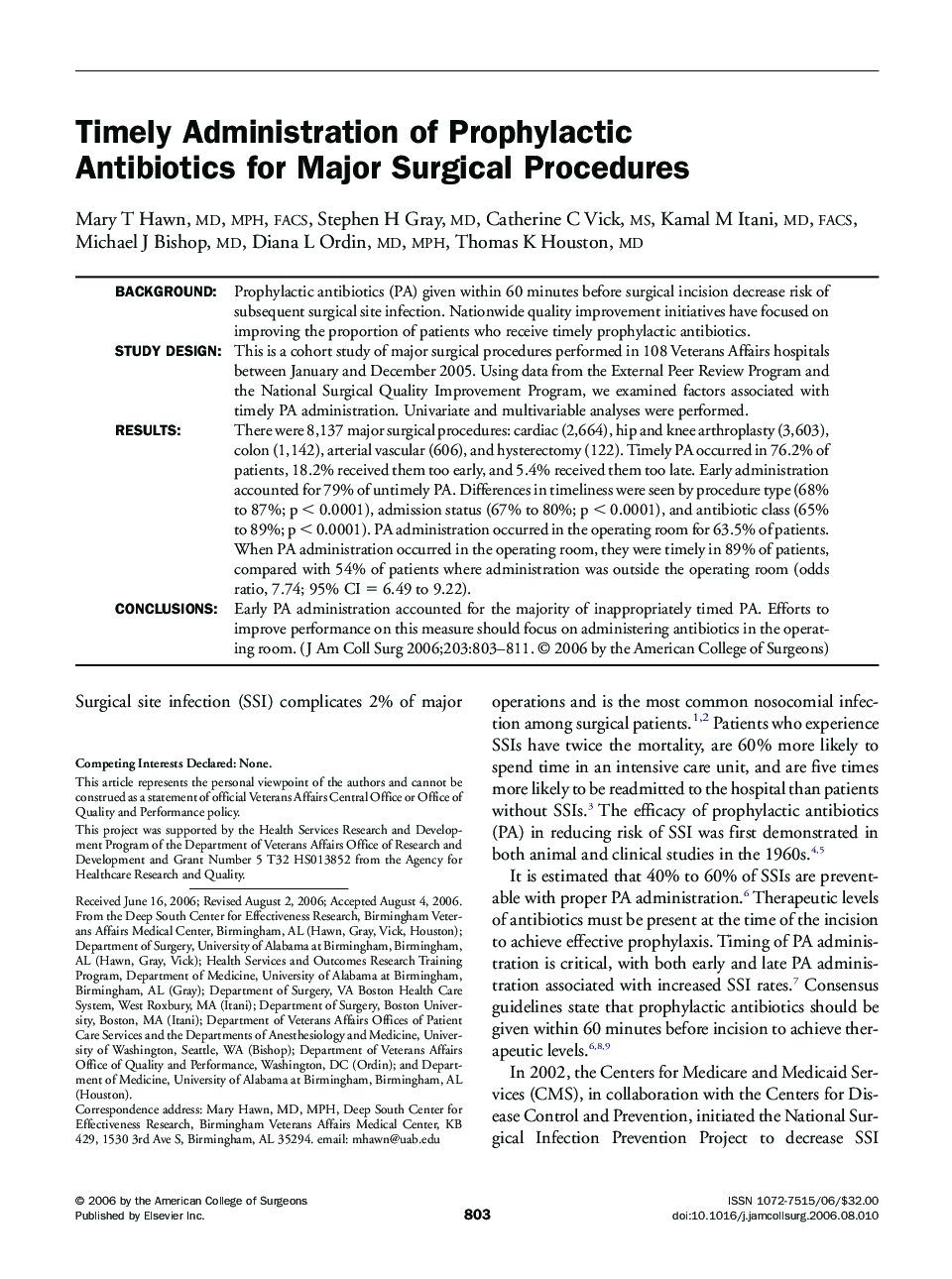| Article ID | Journal | Published Year | Pages | File Type |
|---|---|---|---|---|
| 4295907 | Journal of the American College of Surgeons | 2006 | 9 Pages |
BackgroundProphylactic antibiotics (PA) given within 60 minutes before surgical incision decrease risk of subsequent surgical site infection. Nationwide quality improvement initiatives have focused on improving the proportion of patients who receive timely prophylactic antibiotics.Study designThis is a cohort study of major surgical procedures performed in 108 Veterans Affairs hospitals between January and December 2005. Using data from the External Peer Review Program and the National Surgical Quality Improvement Program, we examined factors associated with timely PA administration. Univariate and multivariable analyses were performed.ResultsThere were 8,137 major surgical procedures: cardiac (2,664), hip and knee arthroplasty (3,603), colon (1,142), arterial vascular (606), and hysterectomy (122). Timely PA occurred in 76.2% of patients, 18.2% received them too early, and 5.4% received them too late. Early administration accounted for 79% of untimely PA. Differences in timeliness were seen by procedure type (68% to 87%; p < 0.0001), admission status (67% to 80%; p < 0.0001), and antibiotic class (65% to 89%; p < 0.0001). PA administration occurred in the operating room for 63.5% of patients. When PA administration occurred in the operating room, they were timely in 89% of patients, compared with 54% of patients where administration was outside the operating room (odds ratio, 7.74; 95% CI = 6.49 to 9.22).ConclusionsEarly PA administration accounted for the majority of inappropriately timed PA. Efforts to improve performance on this measure should focus on administering antibiotics in the operating room.
